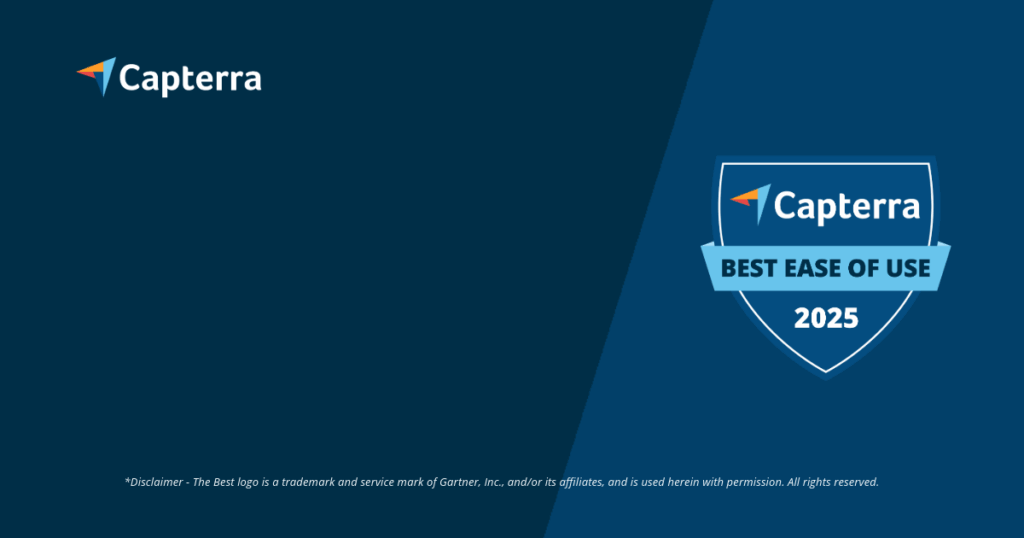Say goodbye to construction site chaos: Digital coordination puts your project on track
Let’s be honest, the construction industry isn’t easy: Cost pressure is rising, skilled workers are scarce, and projects are becoming increasingly complicated. Fresh ideas are needed! This is where digitalization comes into play, particularly with specialized construction coordination software. Imagine software that helps you complete construction projects more smoothly, improves communication among all stakeholders, and avoids costly mistakes. So, if you’re wondering how to digitize your construction projects while saving time and money, you’ve come to the right place. We at Valoon GmbH want to show you how to elevate your construction projects to a whole new level with the right construction software and clever strategies. Discover with us what modern construction coordination software can do and how you can find the solution that perfectly fits your company.
- Digital tools as the answer to growing challenges such as cost pressure and shortage of skilled workers.
- Specialized software for construction coordination to accelerate projects and improve communication.
- Goal: Increasing efficiency, avoiding mistakes, and saving time and money through digital solutions.
- Valoon GmbH as your partner for the digital transformation of your construction projects.
Digitally roll up your sleeves: Mastering challenges in construction coordination
Hand on heart: Coordination at construction sites? Often a jumble of manual steps, unclear information, and systems that don’t communicate with each other. We all know the result: misunderstandings, delays, and ultimately higher costs. In the digital age, however, your clients and partners expect clear processes and quick results. That’s exactly where construction coordination software comes in. It creates a central hub for all important project data and all communication. Digital transformation is no longer just a buzzword, but a pure necessity, to stay competitive. Those who still rely on outdated methods risk falling behind. A smart project management software for construction can truly make a difference, for example, by facilitating and making construction progress transparent.
Why typical project management tools are often not the answer
General project management tools often resemble a Swiss Army knife without a corkscrew for the winemaker – well-intentioned but not really suited to the specific needs of the construction industry. They often lack typical functions for us in construction: detailed defect management, the ability to maintain construction logs, or integration with BIM models (Building Information Modeling). Construction coordination software, on the other hand, is specifically tailored to our processes and requirements in the construction sector. It understands that we need mobile solutions for the job site, enables seamless construction documentation, and helps us comply with regulations such as the Construction Site Ordinance (BaustellV). Our research shows time and again: standard software often isn’t enough. What we need is specialized ‘construction project management software’ that encompasses aspects like task management in construction and a digital document management software for construction under one roof. The construction industry has its own rules – and needs tailored solutions, that can do more than just the standard.
Our goal: To give you clarity and the right choice for your construction coordination software
With this article, we want to provide you with a good overview of what such a software solution can do and what benefits it can bring you. We explain what makes this type of software special, which core functions it should have, and how you can find the solution that truly fits your company. Additionally, we introduce you to some providers and give you practical tips for getting started. Our aim is to provide you with a solid basis for your decision, so you can make the most of digitalization for your construction projects. We also take a look at future trends like AI and IoT in the construction coordination software and discuss challenges such as data security and team acceptance. With this knowledge, you’ll be well-equipped to find and successfully implement the right effective construction management software for your needs.What’s really in it? Core functions and the fine difference of construction coordination software
To truly get everything out of it, it’s super important to understand exactly what a specialized construction coordination software actually entails and which functions will be crucial for your success. This isn’t just about digitizing paperwork. No, it’s about a real optimization of your entire workflows in construction projects. A good construction coordination software is like the spider in the web: the central information hub that supports you from the initial planning to handover and even beyond. It ensures transparent, traceable project processes and helps you identify and counteract risks early on. Choosing the right construction coordination software is therefore a truly strategic step for any construction company.
Definition: What we mean by specific software solutions for the construction industry
construction coordination software – these are specialized programs developed to simplify and improve often complex planning, management, and communication processes in construction projects. Unlike general project management tools, they come with industry-specific modules and functions precisely tailored to the needs of us architects, engineers, construction managers, and all other project stakeholders. Think of the digital collection of data directly at the construction site, a sophisticated defect management system, legally compliant construction documentation, and the integration of BIM data. At the center is for us the simplification of data collection and processing and a better flow of information between the site and the office – that’s also our mission at Valoon GmbH. Our goal is to offer one of the ‘easiest project management software in the world’ that transforms everyday messenger communication into structured, valuable project data.
The key features at a glance – for smooth construction processes
A powerful construction coordination software should include some core functions to really meet the diverse demands on the construction site. These functions are crucial for efficient project execution and a successful digitization of your construction processes. Only the right combination of these elements makes a software solution an indispensable assistant for modern construction companies. Here are some of the key features you should keep an eye on when making your selection:
- Central data management and communication: All important information, plans, documents, and all correspondence are stored in one place and are accessible to all authorized persons at any time. This prevents islands of information and misunderstandings. KENEXOS®, for example, provides such a central platform.
- Mobile data collection and offline functionality: The ability to capture data directly at the construction site via a construction site app on a smartphone or tablet – even without a stable internet connection – is simply essential. 123erfasst and the Bosch Toolbox App are good examples here.
- Task and defect management: A system that allows you to capture, assign, and track tasks and construction defects, often with photo documentation and geolocation on digital plans – just like PlanRadar or Capmo offer.
- Document management and reporting: A structured storage of all documents, the creation of construction logs, protocols, and reports (e.g., photo documentation, measurements) is a must. Docuware, for example, helps with scanning and indexing paper documents.
- Integration of BIM and other systems: Interfaces with BIM software (Building Information Modeling) and other systems like ERP (Enterprise Resource Planning) are important for a seamless data flow. The support of open standards like IFC (Industry Foundation Classes) is crucial, as the research input on openBIM shows.
The difference: General project management software vs. construction software vs. construction coordination software
While general project management software provides tools for projects in various industries, it often lacks the specific twist for us in construction. construction software is a much broader term that can also include commercial programs (AVA software for tendering, awarding, invoicing), CAD applications, or structural analysis software. Construction coordination software is a specialized niche within construction software, which clearly focuses on the operational processes of construction execution and monitoring. It bridges the gap between technical planning and commercial processing by digitizing and optimizing information exchange and collaboration on the construction site. Its strength lies in the practical support of the daily work of construction managers and foremen – for example, through seamless integration of messaging services like WhatsApp, a true unique selling point of our software at Valoon GmbH.The benefits are clear: Construction coordination software transforms your projects
The use of specialized construction coordination software is much more than just digitizing old processes. It’s about a real revolution in your way of working on the construction site! The result? Significant improvements in efficiency, collaboration, quality, and yes, also in costs. Companies that wisely employ these technologies gain a real competitive edge. The investment in modern construction coordination software often pays off surprisingly quickly – through fewer errors, shorter downtimes, and optimal use of your resources. Let’s take a closer look at what concrete benefits you can expect from shifting to digital construction coordination.
- More efficiency and time savings: Digital helpers automate routine tasks, accelerate the flow of information, and enable faster decision-making.
- Better collaboration and transparency: A central platform for all project participants fosters clear responsibilities and seamless documentation.
- Quality assurance and defect management: Digital capture and tracking of defects improve construction quality and serve as proof.
- Cost savings: Optimized processes reduce construction time overruns, rework, and material waste, leading to direct financial benefits.
More efficiency and time saved – thanks to digital helpers!
One of the biggest advantages of construction coordination software is clearly the massive increase in efficiency and the associated time savings. By automating recurring tasks – think of report creation or the distribution of plan changes – the manual effort is reduced significantly. The digital collection of data directly on the construction site makes redundant entries unnecessary and speeds up the flow of information between your team on site and the office. Communication breakdowns, which often lead to costly rework, are minimized through a central, transparent platform. For example, information can be communicated clearly and directly via a communication software for construction companies to all key individuals. Faster decisions are made possible through real-time access to current project data, which is particularly valuable in critical project situations. That’s exactly where our software at Valoon GmbH comes in: We simplify data collection through familiar messaging services like WhatsApp, thereby noticeably reducing training efforts.
Better collaboration and transparency for the entire project team
construction coordination software is the central point of contact for everyone involved in the project – from the architect to the specialist planner, subcontractor, and the client. Everyone in the team has access at any time to the relevant, up-to-date data and plans. This fosters transparent and traceable collaboration. Clear responsibilities and unambiguous task distribution, supported by functions like task management in Capmo or KENEXOS®, ensure that everyone knows what to do. The ability to work together in real-time on documents through a cloud project management construction solution like Bluebeam Cloud significantly improves team coordination. The automatic logging of changes and decisions creates seamless documentation and increases accountability. This is a core aspect that Oracle Aconex emphasizes with its focus on a ‘single source of truth.’
Ensure quality and manage defects smartly
Another crucial advantage is the improved quality assurance and significantly more efficient defect management. By digitally recording defects directly on the construction site – often including photographic documentation and precise localization on the construction plan (e.g., using POIs in KENEXOS® or the image-based documentation from OpenSpace) – problems can be identified and documented early on. The assignment of defects to the responsible trades and the tracking of the resolution status is done transparently and promptly. Software solutions like PlanRadar are real specialists in this regard. The comprehensive documentation of all measures not only serves internal quality assurance, but also as proof to clients and when it comes to warranty claims. The automatic creation of defect reports additionally saves time and ensures a professional appearance. The question “” is often answered with solutions offering strong defect management.
Save costs through optimized construction processes – here’s how!
At the end of the day, all these improvements lead to tangible cost savings. Thanks to better planning and coordination, construction time overruns become less frequent, construction coordination software resulting in lower costs for personnel and equipment. Minimizing rework through early error detection and efficient defect management saves materials and labor time. Optimized utilization of your resources, for example through better coordination of trades, also contributes to cost reduction. Additionally, avoiding contractual penalties through timely completion is an important factor. Investing in good construction coordination software pays off not only through increased efficiency but also through direct financial benefits. The question “” should always be considered in light of return on investment.Finding the needle in a haystack: How to choose the perfect construction coordination software
Selecting the right construction coordination software is a crucial step if you want to successfully digitize your construction projects. The market is full of solutions that differ in functionality, specialization, and of course price. To find the software that truly meets your specific needs, careful analysis and a structured selection process are essential. It’s not about choosing the software with the most features, but rather the one that best supports your workflows and is also gladly used by your employees. Thorough preparation helps you avoid misinvestments and ensures you get the most out of your new construction coordination software .
- Requirements analysis: Clearly define your needs, project sizes, and the processes to be digitized.
- Functionality & user-friendliness: Pay attention to necessary modules and intuitive operation for high employee acceptance.
- Integration & compatibility: Check interfaces to existing systems (ERP, AVA, CAD) and support for open standards (e.g., IFC).
- Security & data protection: Learn about data storage (EU servers), encryption, and access management.
- Costs, support & references: Compare pricing models, support services, and gather user feedback and trial versions.
First, do your homework: Know your own requirements in detail
Before you start looking for a construction coordination software , a honest and detailed analysis of your own needs is essential. Consider the typical size and complexity of your construction projects. Is it mainly about building construction, civil engineering, or perhaps specific areas like the safety and health coordination? How many employees and external partners will need access to the software later? Clearly define which processes you want to digitize and which specific problems you want to solve. Is the focus on defect management, construction documentation, time tracking, or communication? The more precisely you know your requirements, the more targeted you can search for suitable solutions. And very important: Involve your employees in this process! Their needs and acceptance are crucial from the very beginning. Research input on 123erfasst shows, for example, how important a modular structure can be to adapt the software to specific needs.
Functions and user-friendliness: This is what really matters
The functionality of the construction coordination software must naturally fit your defined requirements. Consider carefully which modules are essential for your processes. Do you need a mobile app for the construction site with offline functionality, as offered by KENEXOS® or OpenSpace? Is integration with messaging services like WhatsApp, as in our Valoon GmbH software, a real plus for your field employees? However, pay special attention to user-friendliness. Complicated software will not be embraced by employees and will lead to frustration rather than increased efficiency. An intuitive operation and a short training period are absolute key criteria. Many providers, like PlanRadar or Capmo, offer free trial versions – make sure to take this opportunity to thoroughly test the software! Ease of use is a core promise of our software at Valoon GmbH, as we want to keep your training effort as low as possible.
Integration and compatibility: So that everything plays together seamlessly
A modern construction coordination software should integrate smoothly into your existing IT world. Check if interfaces to other important systems are available, for example to your , your AVA software, or to CAD programs. Support for open standards like IFC is essential for data exchange in BIM projects. This is also emphasized in the research input on openBIM and the role of buildingSMART International. Also, pay attention to compatibility with different file formats to ensure smooth exchange of plans and documents. An open API (application programming interface), like the one KENEXOS® offers, also allows for individual connections to third-party systems or custom developments. Also, the possibility of integration with cloud storage like Google Drive or OneDrive can be very useful.
Security and data protection: Your project data is in good hands
The protection of your sensitive project data is of utmost priority when you construction coordination software use. Learn exactly about the security measures of the software provider. Where is the data stored? Ideally, data should be stored on servers in Germany or at least within the EU, to ensure compliance with the General Data Protection Regulation (GDPR). For example, the SiGe-Manager-Online advertises data storage on German servers. SSL encryption for data transmission should be standard today. Also clarify how access management works: Can you specify in detail which user can see and edit which data? This is important to control access to confidential information and ensure data security – an aspect that Oracle Aconex addresses with its audit trails.
Costs and support: Keep an eye on the overall package
The costs for a construction coordination software can vary greatly depending on the provider and functionality. Pay attention to transparent pricing models. Are there one-time license fees or a monthly or annual subscription, as is common with SaaS solutions? Consider not only the acquisition costs but also possible ongoing costs for updates, support, or additional user licenses. Good and fast customer support is invaluable, especially during the implementation phase or if any technical issues arise. Ask about support times and channels. Regular updates and further developments of the software are important, to benefit from new features and close security gaps, as emphasized in the research input on software updates.
References and reviews: Benefit from the experiences of others
Before you finally decide on a construction coordination software , be sure to take a look at references and reviews from other users. Testimonials from companies in your industry can give you valuable insights into how practical the software really is. Look for reviews in trade magazines or on independent review portals. Many providers also offer case studies or customer testimonials on their websites. Definitely take the opportunity to request a free demo version or test the software for a limited time. This way, you can find out for yourself if the solution meets your requirements and is well accepted by your employees. This is an important step to ensure that the chosen construction coordination software actually drives your construction projects forward.Who can do what? A look at leading construction coordination software solutions
The market for construction coordination software is truly diverse and offers something for almost every taste and company size. From small, specialized providers to large, comprehensive platforms, there’s a lot to consider. To make your selection a little easier, we present here some interesting providers and their products. This selection is based on the solutions mentioned in the research input and of course also on our own expertise here at Valoon GmbH. We’ll take a look at the respective focuses, core functions, and target audiences so that you can get a first point of reference for your decision. But remember: The “best” software is always the one that best meets your specific requirements.
Taking a closer look at some providers and their products
The world of construction coordination software is constantly changing. Here’s a brief introduction to some players that have appeared in the research input or are simply relevant in the market:
- Valoon GmbH: As your host here on the blog, we naturally focus on the easy integration of common messaging services like WhatsApp. Our construction project management software transforms often unstructured communication into valuable project data. This lowers the barriers to digitization, especially for your field employees. Another cool feature: automatic translation into over 50 languages.
- PlanRadar: A quite comprehensive solution when it comes to defect management and construction documentation. PlanRadar often appears in the and is known for its detailed features for capturing and tracking tasks and defects directly on digital plans.
- Capmo: This cloud-based software for the construction industry has features for construction scheduling, construction documentation, defect management, and task management. Capmo aims to simplify collaboration among all project participants.
- 123erfasst: Known for its modular app structure. This means that site managers can adapt the software to their specific needs. Focus areas here are mobile time tracking, construction diaries, and photographic documentation.
- KENEXOS®: Offers a central platform for project data and communication, including mobile construction diaries, POI-based defect management, and offline functionality. The software also supports coordinators according to the construction site regulation (BaustellV).
- OpenSpace: Specializes in image-based construction site documentation with 360° cameras. With OpenSpace, virtual construction site walkthroughs are possible, and it can be integrated with BIM models (BIM Compare) for collision checking.
- SiGe-Manager-Online: A highly specialized construction coordination software for safety and health protection coordination (SiGeKo). It provides tools for notifications, hazard catalogs, and the creation of SiGe plans.
- Other interesting providers: This naturally includes global players like Autodesk Construction Cloud, which offers a wide range of tools for the entire construction lifecycle, and is, or Oracle Aconex, known for its strong document management and collaboration features in large projects. Solutions like BauMaster, focusing on practical usability, are also well-established in the market.
Features, prices, and target groups in comparison – what should you pay attention to?
When comparing different construction coordination software solutions, you should not only look at the pure range of functions, but also keep an eye on the pricing models and the main target group of the providers. Some solutions, like our Valoon GmbH software, focus entirely on maximum simplicity and quick acceptance through familiar tools. This makes them particularly appealing to companies with many field employees seeking a low barrier to entry into digitization. Others, like Autodesk Construction Cloud or Oracle Aconex, are very comprehensive platforms that are rather tailored to larger companies and complex projects and may thus require higher investments. Specialized tools like the SiGe-Manager-Online serve a very specific niche. Prices often vary depending on the number of users, the chosen feature package, or the size of the project. Be aware of transparent costs and check if trial phases or demo versions are offered, to test the software calmly in advance. The choice of the right construction coordination software depends heavily on your individual needs and budget.Get ready: Here’s how to successfully implement construction coordination software in your company
Okay, the right construction coordination software has been selected – great! But that’s just the first step. At least as important is to implement the software successfully in your company. Careful planning and involving all stakeholders are crucial to ensure that the new construction coordination software actually brings the desired efficiency improvements and enhancements. A rushed introduction without a clear strategy can quickly lead to frustration among employees and result in the software’s potential not being fully realized. With a structured approach and by considering a few important success factors, you can ensure that your investment in construction coordination software bears fruit and your construction projects are sustainably optimized.
- Goals and Planning: Define clear goals for the software implementation and create a detailed project plan with responsibilities and timelines.
- Involvement of Stakeholders: Communicate the benefits early on and involve key users in the selection and implementation process to promote acceptance.
- Employee Training: Plan comprehensive, role-specific training and offer ongoing support.
- Pilot Project and Gradual Rollout: Test the software initially in a pilot project to gather experiences and make adjustments before it is rolled out company-wide.
- Continuous Optimization: Regularly gather user feedback, analyze software usage, and adjust processes and settings as needed.
Your step-by-step guide for a successful software launch
A successful software launch needs a clear plan. Here are the key steps to keep in mind when implementing your construction coordination software :
- Set clear goals and plan the project: Define precisely what you want to achieve with the implementation of the construction coordination software (e.g., reduce the time for rectifying defects by X%, improve on-time delivery by Y%). Create a detailed project plan with responsibilities, a timeline, and key milestones.
- Bring all stakeholders on board: Communicate early and transparently why the software is being implemented and what benefits everyone can expect. Involve key users from different departments (e.g., construction management, foremen, estimating) in the selection and implementation process. The acceptance of your employees is a crucial success factor!
- Train Employees: Plan comprehensive training for all user groups. The training content should be tailored to the respective roles and tasks. In addition to the initial training sessions, offer continuous support and perhaps a refresher course later. Our Valoon GmbH software is designed for intuitive operation through familiar messaging services to minimize training effort from the start.
- Start the pilot project and roll out gradually: Test the software initially in a pilot project. This way, you can gain initial experiences and resolve any initial teething problems before rolling it out company-wide. A gradual rollout gives you the opportunity to respond to feedback and adjust processes.
- Continuously Optimize Processes: The software implementation is not a one-time event but an ongoing process. Regularly collect feedback from users, analyze how the software is being used, and adjust processes and settings as needed. Regular software updates, as mentioned in the research input, are important for security and new features.
Typical stumbling blocks in software implementation – and how to avoid them
When implementing new software, one can easily stumble. An insufficient analysis of actual requirements often leads to the selection of software that does not optimally fit the company’s workflows. Insufficient communication about the goals and benefits of the new construction coordination software can lead to resistance among employees – we want to avoid this, of course. Another common mistake is insufficient or poorly designed training, which prevents employees from using the software effectively. The lack of acceptance among end users is one of the main reasons why software projects sometimes fail. To avoid these mistakes, it is crucial to involve everyone from the beginning, communicate clearly, and ensure sufficient time and resources for training and support. Choosing software with high user-friendliness, as we aim for at Valoon GmbH, can also be a great help here.
Tips and Tricks: Get the most out of your construction coordination software
To unlock the full potential of your construction coordination software , you should adopt a few best practices. Customize the software as much as possible to fit your specific corporate processes. Many solutions do offer options to configure workflows, report templates, or checklists individually. Utilize all relevant functions and modules of the software – often, unused potentials are left untapped because employees are not aware of all the possibilities. Encourage the exchange of best practices within your company. Regular data backups are essential to prevent data loss; many cloud-based solutions like a cloud project management construction software provide automatic backups. Encourage your employees to give feedback on the software, and use this feedback to continuously improve. The integration with other tools, such as connecting to a construction site app, can further enhance efficiency.A look into the crystal ball: How AI, BIM, and IoT will change construction coordination in the future
The developments in the field of construction coordination software are certainly not standing still. Technological advances constantly open up new possibilities to make construction projects even more efficient, transparent, and safe. Trends such as Artificial Intelligence (AI), Building Information Modeling (BIM), the Internet of Things (IoT), as well as cloud computing and mobile technologies are already shaping the next generation of software solutions. These innovations promise not only that even more routine tasks will be automated but also offer entirely new ways of thinking about planning, execution, and monitoring of construction projects. For us in the construction industry, it is crucial to keep an eye on these developments to remain competitive in the future and fully leverage the opportunities of digitization.
Artificial Intelligence and Machine Learning: Smart Helpers for Construction Planning and Management
Artificial Intelligence (AI) and Machine Learning (ML) are increasingly finding their way into the construction coordination software. These technologies can automatically analyze vast amounts of data generated by construction projects. AI algorithms can recognize patterns and irregularities that might escape human attention. This can, for example, help predict risks and potential problems, such as in scheduling or cost control. ML systems can learn from data from past projects, thus improving the accuracy of cost estimates or making construction processes more efficient. Automatic evaluation of image data from the construction site, for example, for progress monitoring or quality assurance, is also an exciting application area. Although much is still in development, the use of AI in the construction coordination software promises significant productivity gains and fewer wrong decisions.
Building Information Modeling (BIM): The Standard for Digital Construction Projects Today and Tomorrow
Building Information Modeling (BIM) is much more than just 3D planning; it is a method where all project participants collaborate over the entire lifecycle of a building. BIM is a central driver for digitization in the construction industry and has a huge impact on construction coordination software. When BIM data is integrated into the construction project management software , it enhances the coordination of trades, enables early clash detection, and allows for more precise quantity takeoffs. Virtual construction planning and simulations help identify and avoid errors already in the planning phase. Using open standards like IFC (Industry Foundation Classes), as emphasized in the research input on openBIM, is crucial for enabling different software solutions to “speak” to each other.OpenSpace BIM+ enables, for example, the comparison of 3D models with 360° images of the construction site. The consistent use of BIM leads to higher planning quality and a more efficient construction process – that is for sure!
Internet of Things (IoT): Welcome to the smart construction site of the future
The Internet of Things (IoT) connects physical objects on the construction site – such as machines, tools, or construction materials – through sensors and the internet. This data can then be captured and analyzed in real-time by the construction coordination software . IoT allows for continuous monitoring of construction site activities, such as the location of equipment or the level of material storage. Automated data collection reduces manual effort and provides accurate information for project management. The application examples are diverse: from monitoring the condition of concrete during curing to automatically warning in hazardous situations, which naturally improves safety on the construction site. The combination of IoT data with BIM models and AI analyses opens up entirely new potentials for proactive and data-driven construction coordination. The construction site app will serve as the central interface for the user.
Cloud Computing and Mobile Technologies: The Foundation for Flexibility and Collaboration
Cloud computing and mobile technologies are already essential for modern construction coordination software and will continue to play a central role in the future. Cloud-based solutions allow flexible access to project data – regardless of where you are and which device you are using. Whether in the office, on the construction site, or on the go, this fosters real-time collaboration and improves communication among all project participants. Mobile apps, as offered by providers like 123erfasst, KENEXOS®, or us at Valoon GmbH, make data collection and management directly on the construction site simple and efficient. The offline functionality of many mobile applications ensures that work can continue even with poor internet connectivity. – a true blessing! The scalability and cost efficiency of cloud project management construction solutions make them particularly attractive for companies of all sizes.Overcoming hurdles: Solutions for data security, integration, and winning the hearts of employees
Even though the benefits of construction coordination software are truly convincing, there are of course also a few challenges to tackle when introducing and using them. These include particularly aspects of data security and privacy, integration into existing systems, ensuring user acceptance, and of course costs and return on investment (ROI). However, if we proactively address these potential hurdles, nothing stands in the way of long-term success and sustainable use of construction coordination software . Companies that keep these points in mind from the beginning and develop appropriate solution strategies can optimally leverage the potentials of digital construction coordination and minimize risks.
Data security and privacy – but securely!
The security of your sensitive project data is paramount when using construction coordination software, especially with cloud solutions. You need to ensure that the chosen software complies with current standards for data security and privacy, especially the GDPR.This includes secure data storage, preferably on servers within the EU (as SiGe-Manager-Online does), encrypted data transfer (SSL is the keyword here), and a robust system for access controls and permissions. Regular security audits and updates by the software provider are also super important.At Valoon GmbH, we place the highest value on data security, especially because we integrate third-party messaging services. Our tip: check the privacy policies and security certificates of the providers carefully and, if necessary, enter into contractual agreements (a data processing agreement).
Integration with existing systems – to ensure everything runs smoothly
One of the biggest technical hurdles in introducing construction coordination software is often the integration with the software solutions already in place in your company – think of ERP systems, AVA software, or accounting programs. Missing or poorly functioning interfaces can lead to data silos, duplicate data maintenance, and actual inefficiency.Therefore, pay attention to open interfaces (APIs) when selecting software, as offered by KENEXOS®, and the support of standard data formats (e.g., IFC for BIM data, GAEB for tender data). Good integration capability is essential for a seamless digital workflow and to avoid media breaks. It’s best to clarify with the provider in advance what integration options are available and what effort is involved. Seamless integration of messaging services is a core aspect of our communication software for construction companies at Valoon GmbH – because we know how important that is.
User acceptance and training needs – how to win your team over
The best construction coordination software is of little use if your employees do not accept and use it. Resistance to new technologies and changed workflows is not unusual, especially in a traditionally shaped industry like construction. An intuitive operation and as short an onboarding time as possible are therefore crucial factors for user acceptance. Our Valoon GmbH software aims precisely at this by using familiar tools like WhatsApp – this significantly lowers the threshold., besonders in einer traditionell geprägten Branche wie dem Baugewerbe. Eine intuitive Bedienung und eine möglichst kurze Einarbeitungszeit sind daher entscheidende Faktoren für die Benutzerakzeptanz. Unsere Valoon GmbH Software zielt genau darauf ab, indem sie auf vertraute Werkzeuge wie WhatsApp setzt – das senkt die Hemmschwelle enorm. Comprehensive and target-group-oriented training is essential, to familiarize employees with the functions of the software and to show them the benefits for their daily work. Continuous support and the opportunity to give feedback also contribute to acceptance. By involving your future users in the selection process, you can alleviate concerns and promote identification with the new solution.
Realistically assess costs and ROI – is it worth it?
Of course, the introduction of construction coordination software is associated with costs – for licenses, implementation, training, and possibly also for adjustments. It is important to transparently capture these costs and compare them with the expected benefits (return on investment – ROI).The benefits can show up in direct cost savings (e.g., through fewer errors and rework, shorter construction times) or in indirect benefits (e.g., higher customer satisfaction, a better company image, more motivated employees). A careful analysis of your own processes and the definition of clear metrics (KPIs) help make ROI measurable.Many providers boast significant efficiency gains – question these critically and relate them to your specific business situation. The question “” always also includes an economic consideration.Conclusion: With construction coordination software, you lay the foundation for future-proof construction projects.
The digitization of the construction industry is in full swing, and construction coordination software plays an absolutely key role in this. It helps us all tackle the complex challenges of modern construction projects – from optimizing communication and project management to quality assurance and cost reduction. As we have seen, traditional methods often reach their limits when it comes to meeting the increasing demands for efficiency, transparency, and collaboration. The right software solution, tailored exactly to the needs of your company, can make all the difference here and secure you a sustainable competitive advantage. Therefore, investing in a well-thought-out software solution is an investment in the future capability of your company – we are sure of that at Valoon GmbH!
The most important points at a glance – for your decision
Modern construction coordination software brings a whole lot of benefits: It increases efficiency through automated processes and mobile data collection, improves collaboration through a central platform and real-time data access, ensures quality through digital defect management, and leads to tangible cost savings. When selecting the right solution, a thorough analysis of your requirements, evaluation of functionalities and user-friendliness, integration options, security aspects, as well as costs and support are crucial. Important trends such as AI, BIM, and IoT will further revolutionize the functionality and performance of software for construction coordination – there is still much to come! Challenges such as data security and user acceptance must be addressed proactively. Our Valoon GmbH software, for example, relies on maximum simplicity through the integration of messaging services, to keep the hurdles for digitization low and to promote rapid acceptance within the team.
A look ahead: Future developments and potentials
The developments in the field of construction coordination software will continue to progress rapidly, we are sure of that. We can expect an even stronger networking of data and processes, deeper integration of AI for predictive analytics and better decision-making, as well as broader application of BIM throughout the entire building lifecycle. The “smart construction site,” where machines, materials, and people are digitally connected, is increasingly becoming a reality.. For companies, this means: stay flexible and be ready to adopt new technologies. The ability to use data intelligently and continuously optimize processes will become the decisive success factor. The role of the construction coordinator will further professionalize through these tools and gain importance. The future belongs to companies that recognize and actively shape the opportunities of digitization..
Our recommendation for you in the construction industry: Get started now!
The introduction or optimization of your construction coordination software is an important strategic step to make your construction projects more efficient, transparent, and cost-effective. The information and selection criteria we have presented here are intended to help you make the right decision for your company. Use the potentials of digitization to strengthen your competitiveness and successfully lead your projects into the future. Modern software for construction coordination offers an excellent opportunity to optimize your processes and sustainably improve collaboration within the team as well as with external partners.
With a variety of specialized software solutions, there are countless opportunities to elevate the coordination of your construction projects to a new level. We at Valoon GmbH offer you comprehensive consulting and support in selecting the right construction coordination software – software that turns your everyday messenger communication into structured project data, eliminating information overload and the need for complex software training.
By choosing a modern construction coordination software , you invest in the future of your company. You not only reduce project risks and costs but also make an important contribution to improving quality and efficiency.
Now is the perfect time to explore the possibilities for your company. Contact us today, to start your individual consultation and find the right solution for your construction projects. Register for a demonstration and learn how simple and effective digital construction coordination can be – we look forward to hearing from you!
What exactly is construction coordination software and how does it differ from general project management software?
construction coordination software is a specialized solution tailored precisely to the needs of the construction industry. Unlike general project management tools, it provides industry-specific functions such as mobile defect management, digital construction diaries, connection to BIM models, and the integration of processes such as SiGe coordination. It focuses on the optimization of operational processes directly on the construction site and among all participants.
Our field representatives mainly use WhatsApp. Can construction coordination software handle that?
Yes, some modern construction coordination software solutions, like the ones from Valoon GmbH, allow for a seamless integration of messaging services like WhatsApp. The special thing about it is that everyday, often unstructured communication is directly turned into structured and usable project data. This allows your employees to continue using familiar tools, which increases acceptance and minimizes training effort..
How does construction coordination software help improve communication between the construction site and the office?
Construction coordination software creates a central platform for all project-relevant information and communication.Data from the construction site, such as photos, notes, or defect reports, are digitally recorded and made immediately available to the office team. This reduces misunderstandings, information losses, and significantly speeds up decision-making processes. Valoon GmbH places a focus here on simplifying the flow of information.
Is the introduction of construction coordination software complicated and time-consuming?
The effort for the introduction depends on the selected software and the preparation. Solutions that focus on user-friendliness and easy integration , such as by using familiar messaging services (an approach of Valoon GmbH), can significantly reduce implementation and training effort. Good planning and involving the employees are crucial for a smooth start.. Eine gute Planung und die Einbeziehung der Mitarbeiter sind entscheidend für einen reibungslosen Start.
What specific benefits does construction coordination software bring to my construction company?
The benefits are manifold: Efficiency increase through automated processes and faster communication, time savings through mobile data collection and fewer duplicate entries, improved collaboration through a central data repository, higher quality through digital defect management and seamless documentation as well as cost savings through fewer errors, rework, and optimized resource utilization.
What about data security with cloud-based construction coordination software?
Reputable providers of construction coordination software focus on great value on data security and data protection (GDPR compliance). This includes measures such as data storage on secure servers (ideally in the EU or Germany), SSL encryption of data transmission, and detailed permission systems. It is important to thoroughly review the security concepts of the providers.
Can construction coordination software also help comply with regulations such as the Construction Site Ordinance (BaustellV)?
Yes, many construction coordination software solutions offer features that support compliance with regulations like the BaustellV. This may include digital forms, checklists for safety inspections, or special modules for SiGe coordination (safety and health protection coordination), such as those offered by SiGe-Manager-Online or KENEXOS® with its focus on the BaustellV.
What is the cost of construction coordination software and how quickly does the investment pay off?
The costs vary depending on the provider, range of functions, and number of users. Many providers use SaaS models with monthly or annual fees. The Return on Investment (ROI) often results quickly from time savings, reduction of errors and rework, as well as more efficient project workflows. A thorough analysis of your own needs and a comparison of the offers help find the most economical solution.








